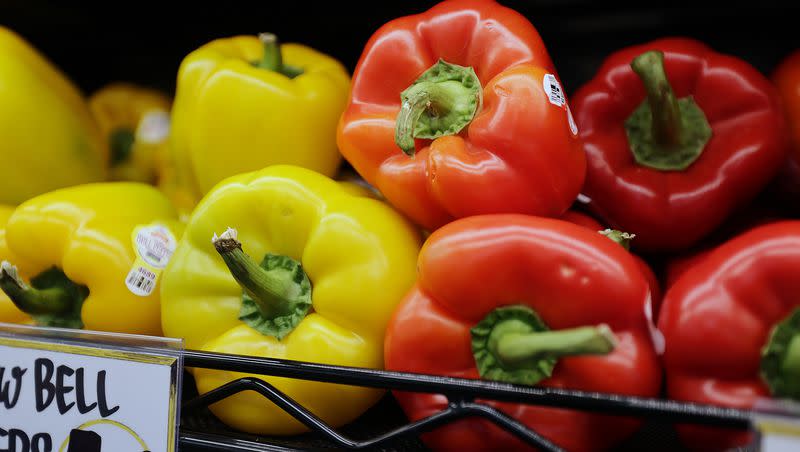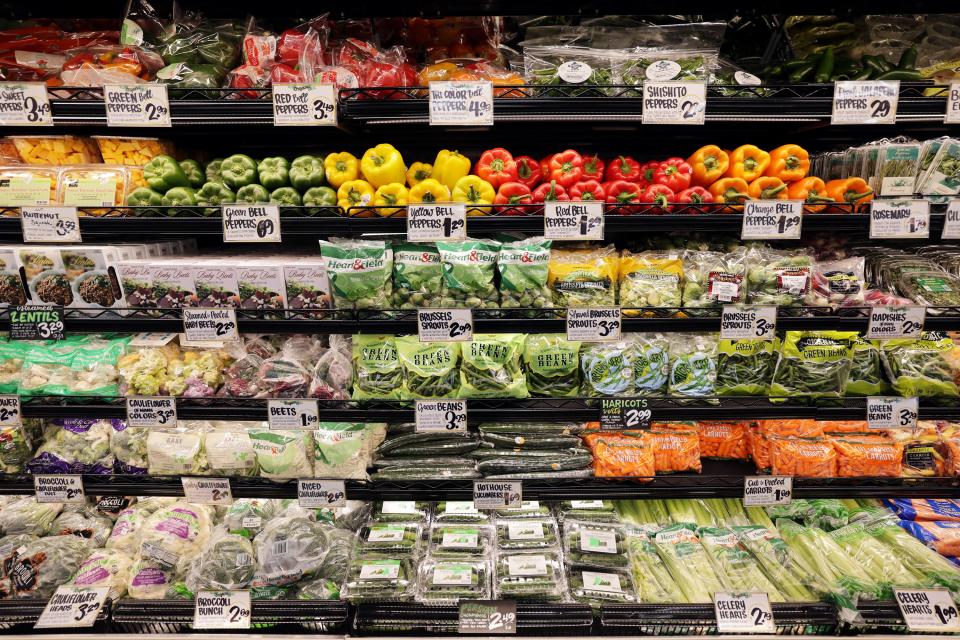How do we feed our families as prices continue to rise? This ‘Produce Mom’ has some ideas

Last month, the United States Department of Agriculture published its forecast for 2023 food prices, and it’s not looking good.
While grocery prices won’t shoot up like they did in 2022, the USDA predicts that 2023 will likely see us pay 6.5% more for groceries than last year. (The cost of eating out will climb even higher — up 8.2%.)
And already, in March of this year, consumers paid 8.5% more for a bag of groceries than they did in March 2022.
It’s not just inflation that’s driving prices up, according to the U.S. Government Accountability Office. There have been supply chain disruptions related to COVID-19 and numerous other factors in play, including drought, an outbreak of avian flu that drove up the price of eggs, and the war in Ukraine, one of the world’s largest wheat exporters. But knowing the reasons for higher prices doesn’t make it any easier when we see the total at the cash register.
However, there are ways to mitigate the effects of rising prices and continue to put healthy dinners on the table for our families. Lori Taylor, founder of The Produce Moms, an organization that endeavors to get more fresh food on American tables, offers some tips.
Ending food waste
“Our biggest trick for households,” said Taylor, is “buy what you will eat, eat what you buy.” While this seems obvious, approximately 40% of fresh food that is harvested ends up in the trash, said Taylor, citing data from ReFed, a nonprofit that seeks to reduce food waste.
“The lion’s share of that waste occurs at the household level,” said Taylor, who added, “We’ve all been there — you buy a week’s worth of groceries to prepare a week’s worth of meals and you end up cooking two of the seven nights. Next thing you know, your salad greens have turned to slime and the clamshell of strawberries that looked beautiful when you picked it up at the grocery store now has mold on it.”
Related
Then most of us toss this compromised food in the garbage. The average family of four wastes $2,760 annually on uneaten food, according to ReFed. What are we throwing away more than anything else? Fruits and vegetables, said ReFed executive director Dana Gunders, author of Waste Free Kitchen Handbook.
Throwing produce away impacts more than our wallets. It also has implications for the environment. “Wasted food is equivalent to about 37 million cars worth of greenhouse gases. If food waste were a country, it would rank No. 3 in terms of its carbon footprint, after the U.S. and China,” Gunders said on the Produce Moms’ podcast. “Food is actually the No. 1 product entering our landfills today.”
And much of that thrown-away produce could actually be used.

A valuable idea
Before Taylor, a 42-year-old mother of two teenage boys, started The Produce Moms, she spent a decade working in food distribution, selling produce to grocery stores. “We received our fresh produce from farmers throughout North, Central and South America and even some parts of Europe and other parts of the world ... we were a true hub of fruits and vegetables and we were a full service supplier to grocery stores in an 18-state delivery corridor.”
In 2012, Taylor was working as the marketing manager at the Indianapolis Fruit Company when she pitched a blog; for the next three years, she developed the site. But in 2015, her employer decided to pull the plug on the project. “But they slid a piece of paper across the table at our off-site meeting and said ‘if you want to buy it, you can, we’d sell it to you.’ And it was expensive, I couldn’t believe it,” she said.
At first, Taylor thought she couldn’t afford to buy The Produce Moms, which now has more than 87,000 followers on Pinterest. But she also knew she couldn’t shut down the blog she’d put so much work into. So later that year, she made a leap of faith. “I paid more for my idea than my home. It’s crazy,” she said, adding that she had support from her husband, who she met in college.
Today, The Produce Moms is an online community and resource with a podcast, TikTok channel and mission: “to put more fruits and vegetables on every table to change the way America eats.”
And as an industry expert, Taylor has a number of ideas that can help you save money.

To begin, rather than buying a week’s worth of food all at once, consider making shorter, smaller, more frequent trips to the grocery store. Taylor herself goes three times a week.
Taylor also advises parents to buy what’s in season to keep costs down. Once you get the food home, be conscious about how you store it — there’s a science to putting groceries in the fridge (which is also explained at length in Gunders’ book). For example, one easy-to-follow tip is not to overfill the fridge — something that goes hand-in-hand with making smaller, more frequent trips to the grocery store.
And knowing the best way to store fresh produce can help preserve it; the group’s website offers tips for storing a wide variety of fresh food.
Even if your schedule doesn’t allow you to go to the store three times a week and you’re stuck doing one big shopping trip at a time and buying in bulk, a lot of the fresh food we buy doesn’t have to be eaten right away. A huge box of, say, strawberries, can be divided and half put in the freezer. Similarly, mangoes, which are in season right now, can be cut and frozen and then thrown into the blender later to make smoothies.
Get creative
While buying produce in season is best on the budget, Taylor acknowledged that there can be some fatigue that comes from eating the same thing all week long. She suggested thinking outside of the box so you’re not eating steamed green beans every day. “Is there an opportunity to incorporate these fresh green beans into a stir-fry or a casserole? Can I blend them up and hide them in hummus?”
Related
What to do when your child won’t eat anything but Ritz crackers
New research offers easy way to get your children to eat more fruits and vegetables
The Produce Moms’ website and YouTube channel both contain some fun and unique recipes that can help you rethink how you’re using produce. Here’s one I would have never thought of on my own: sweet potatoes can be cut super thin and used as toast. And you can pop sliced sweet potato into the toaster, just like a piece of bread.
Taylor also advises keeping meals simple. Don’t make elaborate dishes with an endless list of ingredients, like the teriyaki veggie tempeh that Megyn Kelly confessed to botching on her podcast this week.
Recycle leftovers into new meals. That cold rice that’s been sitting in the fridge half the week? Don’t throw it away — it’s perfect for fried rice. Toss it into a wok with some meat, eggs, veggies and soy sauce. The dish is quick, easy, cheap and yummy.
Cheaper than you think
Of course, at the end of the day, food, like everything, is deeply political. And, as food prices spiraled upwards last year, The Produce Moms partnered with a number of farmers to advocate for a bill known as the Farm Workforce Modernization Act, legislation that would have granted more H2-A visas for temporary agricultural workers — a move proponents say would bring the cost of produce down. (The bill passed with bipartisan support in the House, but stalled in the Senate.)
While it seems counterintuitive that legal migration would decrease prices — visa programs are expensive and legal workers command higher wages than those who lack papers — it boils down to a supply-and-demand issue, said John Hollay, the International Fresh Produce Association’s director of U. S. government relations.
“If we don’t have the workers then we can’t plan to grow the crops. We can’t harvest the crops. And so lack of supply means that prices ultimately go up,” Hollay said.
That said, although many consumers believe that produce is one of the most expensive things in the grocery store — leaving them inclined to steer clear of fresh fruits and vegetables in hopes of cutting costs — Taylor said that’s a myth. “Most of the things in the produce department — not all but most — you can buy for approximately $1 a pound. Where else in the grocery store can you get that kind of price point?”

